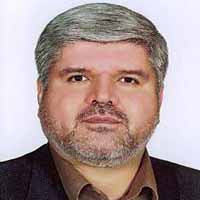Quantification of salinity stress and drought effects on fourteen ecotypes of black caraway (Nigella sativa L.) medicinal plant
Environmental stresses, especially drought and salinity stresses are considered as inhibitors of plant growth and development. The salinity stress cause delay in germination, decrease in the rate and percentage of germination and delay in the emergence of roots and stems in the germination stage. It seems that if seed could pass through the germination stage under stress conditions, the seedling will have more opportunity to grow and develop, and will have the higher ability to tolerate and overcome adverse environmental conditions. This greatly depends on the biochemical and physiological structures of the seedlings. The response is also species and genotypes dependent and depends on the length and severity of the salinity, the age, and stage of development. Differences in the salt tolerance have variation among species within a genus, and of genotypes within a species. black caraway (Nigella sativa L.) is an annual plant with valuable medicinal properties belong to Ranunculaceae family. Because Black caraway growth is slow at the beginning of the season, and on the other hand, salinity and drought are some limiting and effective factors on germination and other stages of plant growth, the aim of this study was to evaluate different N. sativa ecotypes in terms of tolerance to salinity and drought.
In order to investigate the effects of salinity and drought stress on seed germination factors of fourteen black caraway, two separate experiments were carried out in a completely randomized design in the Seed Technology Laboratory of the University of Tehran in 2018. The treatments consisted of fourteen black caraway ecotypes (Ashkzar, Arak, Isfahan, Eqlid, Bejestan, Khaf, Khomeini Shahr, Razan, Zabol 1, Zabol 2, Sarayan, Semirum, Gardmiran, Hamedan), six salinity stress levels (0 , 40, 80, 120, 160 and 200 mM) and four levels of drought stress (0, 0.3, -0.6 and -0.9 MPa) with four replicates in each level. Salinity stress levels were due to different concentrations of sodium chloride and levels of drought stress were due to different concentrations of polyethylene glycol 6000. Distilled water was used to create a zero stress level (control treatment) in both experiments. To conduct the experiments, 50 seeds were placed on filter paper in 8 cm diameter Petri dishes containing 7 mL of each solution. Petri dishes were kept in the growth chamber at a constant temperature of 20°C. The number of seeds germinated was recorded daily until no germination was observed for two consecutive days. The Germin program was used to calculate germination percentage and rate of germination. In addition, to illustrate the germination response to drought stress, the hydrotime model was used.
salinity experiment; The highest Ymax (germination percentage) was found in Razan, Arak, and Ashkzar ecotypes (99.5, 99.33 and 99.16% respectively) and the lowest in Khomeini-e-Shahr ecotype (85.83%). The highest salinity tolerance threshold (X0) was detected in Semirum ecotype (37.17 mM). Arak ecotype had the highest rate of germination (0.013 per hour) in salinity conditions. Thus, Semirom ecotype was the most tolerance ecotype due to the higher salinity tolerance threshold. Drought experiment; The minimum hydrotime constant (θH= 284.040 MPa h) was related to the Bejestan ecotype, and the lowest water potential (Ψb(50)= -0.563 MP ) was observed in the Isfahan ecotype. Since there is a positive correlation between the less water potential )Ψb(50) ( and the emergence percentage and rate of seedling emergence, the Isfahan ecotype was the most tolerant among biotypes that were studied.
In general, the results of these experiments showed that salinity and drought stresses reduced the percentage and rate of germination. Germination percentage response shape and germination rate were different between various ecotypes. Hydrotime model and salinity regression have high ability in separating ecotypes for germination components. The Bejestan and the Isfahan ecotypes are recommended for cultivation in drought conditions. In salt stress conditions, the Semirom ecotype was the most tolerant ecotype among ecotypes.
- حق عضویت دریافتی صرف حمایت از نشریات عضو و نگهداری، تکمیل و توسعه مگیران میشود.
- پرداخت حق اشتراک و دانلود مقالات اجازه بازنشر آن در سایر رسانههای چاپی و دیجیتال را به کاربر نمیدهد.


